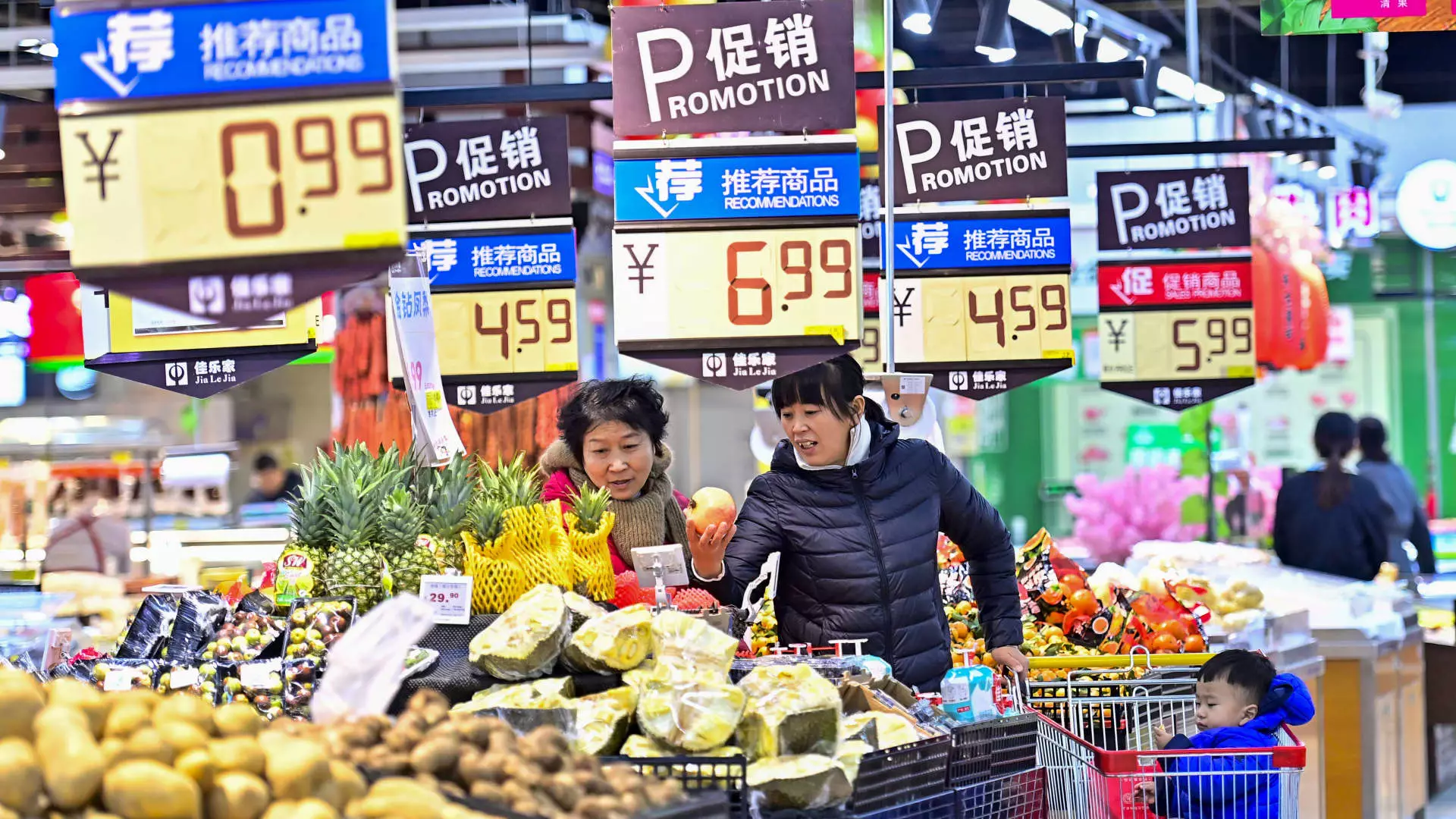In the latter part of 2023, the economic landscape in China presented a worrying picture as consumer price inflation exhibited a dramatic slow-down. December’s figures, released by the National Bureau of Statistics, revealed a mere 0.1% year-on-year increase. While this rate aligns with projections made by Reuters, it signals an unsettling trend of faltering demand within the consumer sector. The precipitous decline from November’s 0.2% inflation rate has ignited discussions surrounding the specter of deflation in the Chinese economy.
The Core Inflation Dilemma
Core Consumer Price Index (CPI) figures, which exclude volatile categories such as food and energy, painted a more promising picture with a 0.4% increase year-on-year, slightly above the previous month’s 0.3%. Notably, the month-over-month performance of the CPI was stagnant, contrasting sharply with the 0.6% decline experienced in November. Analyzing the underlying elements affecting these statistics reveals concerning trends, particularly in food prices, which have shown a significant decline driven by favorable agricultural conditions. Fresh vegetables and fruits saw respective drops of 2.4% and 1%, while a crucial component, pork, dropped by 2.1%. This shift in pork prices is especially disturbing as analysts predict its continued negative impact on headline CPI in the future.
Amidst these consumer challenges, the data on producer prices paints an equally bleak picture. China’s producer price inflation has been in decline for an astonishing 27 consecutive months, with December’s year-on-year rate falling by 2.3%. Although this decrease was marginally better than expected, the downward trend reflects systemic issues tied to weakened demand. The construction sector, particularly infrastructures and real estate, has faced setbacks during the off-season, leading to a reduced demand for materials like steel, which could be contributing to lagging wholesale prices.
The troubling trend of stagnant consumer inflation showcases China’s deepening struggle with inadequate domestic demand. Despite a robust array of stimulus measures introduced by Beijing since September 2023—including interest rate cuts, increased bank lending, and various supports for the stock and property markets—the intended uplift in consumption has yet to materialize. Recent initiatives like the expansion of a consumer trade-in scheme attempt to stimulate the market, but many analysts are skeptical about their efficacy. Economist Louise Loo dubbed them as “quick fixes” that might not lead to meaningful or sustained improvements in overall consumption levels.
Shaun Rein of the China Market Research Group similarly critiques these initiatives, stating that while they possess some merit, they fall short of the larger goal of revitalizing the retail sector. As families increasingly wait for discounts and deals, especially in the run-up to significant events like Chinese New Year, consumer spending behavior remains frustratingly conservative.
Signs of Potential Recovery Amidst Challenges
Despite the pressures exerted by weak inflation and consumer sentiment, some indicators hint at potential recovery. Factory activities in China demonstrated continuous expansion for three months up to December, although the pace decelerated in the last month of the year. Carlos Casanova, senior economist at Union Bancaire Privée, acknowledges emerging signs of resilience, although he emphasizes the substantial headwinds posed by the struggling property sector and ongoing trade tensions with the United States.
In this context, Loo advises that the path to significant reflation in China is likely to remain below expectations due to persistent weaknesses in consumer demand. Additionally, the country’s currency situation adds another layer of complexity. The onshore yuan depreciated to a 16-month low against the U.S. dollar, reflecting broader economic pressures that could further hamper domestic consumption.
The current economic data presents a conundrum for China—on the one hand, certain sectors show signs of recovery, while on the other, persistent inflation struggles signify deep-rooted issues with consumer confidence and spending. As the government continues to explore various stimulus measures, the efficacy and long-term impact of these initiatives will be critical in determining the trajectory of China’s consumer market in 2024 and beyond. The balance between encouraging immediate consumption and fostering sustainable economic growth remains a vital challenge for policymakers.


Leave a Reply